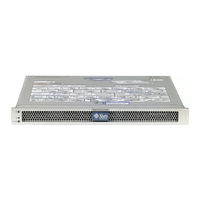Sun Microsystems Sun Fire T1000 Server Manuals
Manuals and User Guides for Sun Microsystems Sun Fire T1000 Server. We have 8 Sun Microsystems Sun Fire T1000 Server manuals available for free PDF download: Service Manual, Administration Manual, Installation Manual, Overview, Site Planning Manual
Sun Microsystems Sun Fire T1000 Service Manual (118 pages)
Brand: Sun Microsystems
|
Category: Server
|
Size: 2 MB
Table of Contents
Advertisement
Sun Microsystems Sun Fire T1000 Service Manual (90 pages)
Sun Microsystems Server Service Manual
Brand: Sun Microsystems
|
Category: Server
|
Size: 5 MB
Table of Contents
Sun Microsystems Sun Fire T1000 Administration Manual (80 pages)
Brand: Sun Microsystems
|
Category: Server
|
Size: 0 MB
Table of Contents
Advertisement
Sun Microsystems Sun Fire T1000 Installation Manual (72 pages)
Brand: Sun Microsystems
|
Category: Server
|
Size: 2 MB
Table of Contents
Sun Microsystems Sun Fire T1000 Installation Manual (68 pages)
Brand: Sun Microsystems
|
Category: Server
|
Size: 1 MB
Table of Contents
Sun Microsystems Sun Fire T1000 Overview (20 pages)
Brand: Sun Microsystems
|
Category: Server
|
Size: 0 MB
Table of Contents
Sun Microsystems Sun Fire T1000 Site Planning Manual (9 pages)
Brand: Sun Microsystems
|
Category: Server
|
Size: 0 MB
Table of Contents
Sun Microsystems Sun Fire T1000 Installation Manual (12 pages)
Installing the Single-Drive or Dual-Drive Assembly in the server
Brand: Sun Microsystems
|
Category: Server
|
Size: 1 MB
Advertisement
Related Products
- Sun Microsystems Netra T1 AC200
- Sun Microsystems Netra T1 DC200
- Sun Microsystems Netra t1 105
- Sun Microsystems Netra t1 100
- Sun Microsystems Netra t1 Series
- Sun Microsystems SPARC T5120
- Sun Microsystems Netra T4 DC100
- Sun Microsystems SPARC Enterprise T5440
- Sun Microsystems SPARC Enterprise T5140
- Sun Microsystems Sun Fire T200







